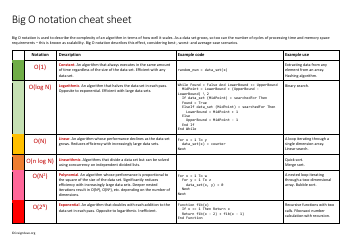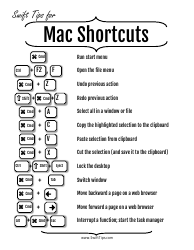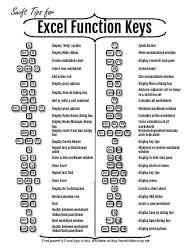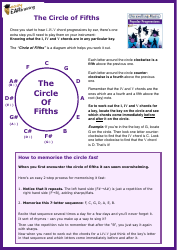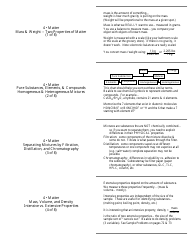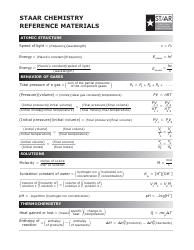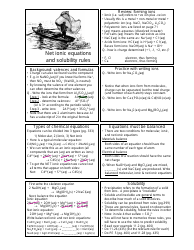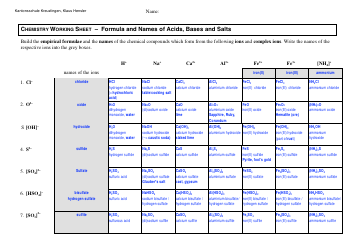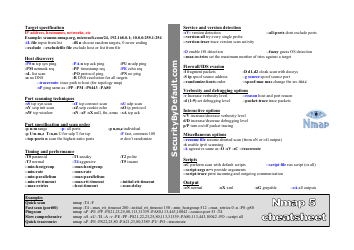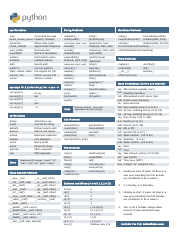Asymptotic Notation Cheat Sheet
The Asymptotic Notation Cheat Sheet is a document that provides a summary or quick reference guide for understanding and using asymptotic notation. Asymptotic notation is a mathematical framework used to describe the efficiency or growth rate of algorithms, particularly in computer science. The cheat sheet may include information on different types of notation such as Big O, Big Omega, and Big Theta, as well as their definitions and common examples. It helps programmers and computer scientists analyze the performance of algorithms and make informed decisions regarding their implementation and optimization.
FAQ
Q: What is asymptotic notation?
A: Asymptotic notation is used in computer science to describe the behavior of functions as the input size approaches infinity.
Q: What are the different types of asymptotic notation?
A: The different types of asymptotic notation are Big O notation, Omega notation, and Theta notation.
Q: What is Big O notation?
A: Big O notation, denoted as O(f(n)), is used to describe the upper bound or worst-case scenario of a function.
Q: What is Omega notation?
A: Omega notation, denoted as Ω(f(n)), is used to describe the lower bound or best-case scenario of a function.
Q: What is Theta notation?
A: Theta notation, denoted as Θ(f(n)), is used to describe both the upper and lower bounds of a function.
Q: What is the significance of asymptotic notation?
A: Asymptotic notation allows us to analyze the efficiency and performance of algorithms without having to consider constant factors or exact running times.
Q: How is asymptotic notation used in algorithm analysis?
A: Asymptotic notation is used to determine the growth rate of functions and compare the efficiency of different algorithms.
Q: What is the time complexity of an algorithm?
A: The time complexity of an algorithm represents the amount of time it takes to run as a function of the input size.
Q: What is the space complexity of an algorithm?
A: The space complexity of an algorithm represents the amount of memory it requires as a function of the input size.
Q: What are some common examples of asymptotic notations?
A: Some common examples of asymptotic notations are O(1), O(log n), O(n), O(n^2), and O(2^n).


